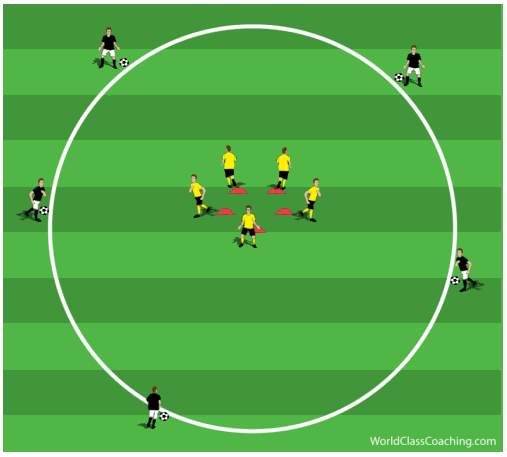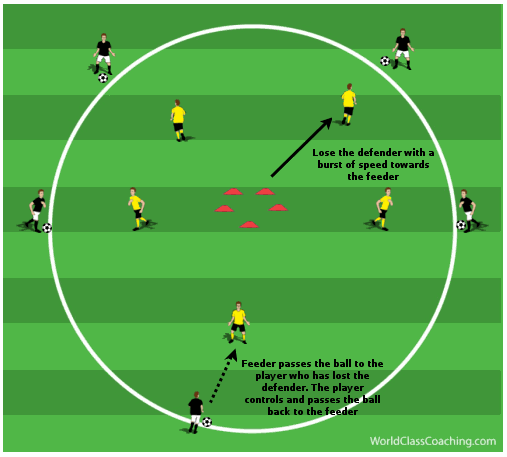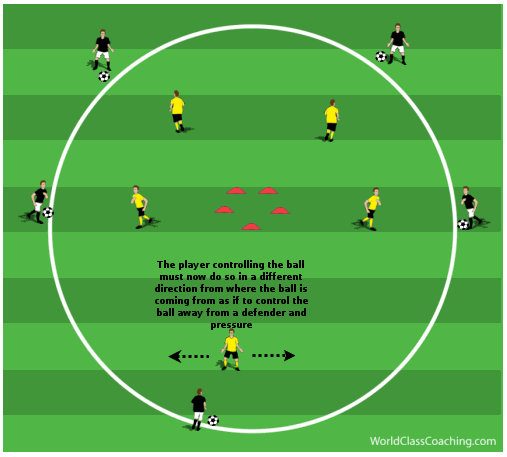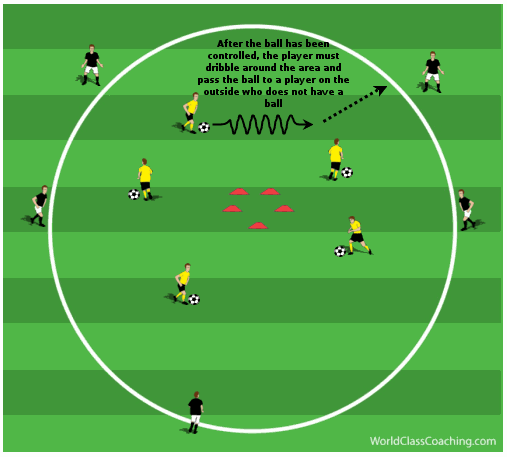By Jebreel Bubtana
This is a great exercise to use to work on first touch and develop your player's endurance levels. I have used 10 players in this exercise as an example; however the numbers can be modified depending on the size of your squad. The exercise starts with 5 players on the outside of the area with a ball each and the other 5 players in the middle of the area without a ball (figure 1).
The players in the middle run towards the outside players and when they are around 5 yards away, the ball will be passed to them by the player on the outside. They must control the ball and pass it back to the player on the outside (figure 2). The players in the middle have to work for 3 minutes before switching the feeders and players in the middle.
The idea is that the players in the middle must imagine that they are being followed by a defender. In order to get away from this defender they must have an explosive burst of speed towards the feeder on the outside. After they have done this, the player jogs back into the middle before finding another outside player to receive the ball from.
Start the exercise with the feeders passing the ball to the players in the middle before working on controlling the ball with the thigh and chest. You can also get the players in the middle to side foot volley the ball or head the ball back to the feeder.
Coaching Points:
Jog back into the middle after controlling and passing the ball but then explode with speed towards the player on the outside as if to lose a defender in a real game situation.
Relax when controlling the ball.
Make sure that the ball is on the ground before passing to ensure accuracy.
Communication - the player controlling the ball must ask for the ball.
Progression:
The exercise is essentially the same; however, the player controlling the ball must do so to their right or left as if controlling the ball into space (figure 3).
Once the ball is under control they must dribble around the area and pass the ball to a player on the outside who does not have a ball. Verbal and eye communication is essential to ensure that two soccer balls are never passed to a player on the outside at the same time.
Another variation can also be that the feeder must shout either “man on” or “time”. If the player controlling the ball hears the shout of “man on” then they must control the ball and pass it back to the feeder. If the player controlling the ball hears the shout of “time” then they can control the ball into space and dribble around the area before passing the ball to a player on the outside who does not have a ball.
Again with all of these progressions and variations, it is important that as the players get tired that the quality of control of the ball and the pass is not compromised.
Remember, if you liked this article, please help us get the word out and share it on Facebook, Twitter, etc. And don't forget to share your thoughts and ideas by leaving a comment below.
[wpsharely id="1886"][/wpsharely]Jebreel Bubtana
BRASA – Brazilian Soccer Academy
NSCAA Advanced National Diploma
NSCAA Director of Coaching Diploma
Follow me on Twitter @jib1989






